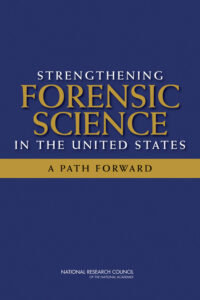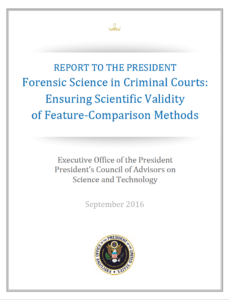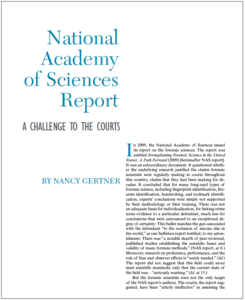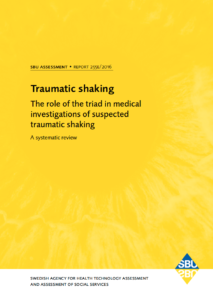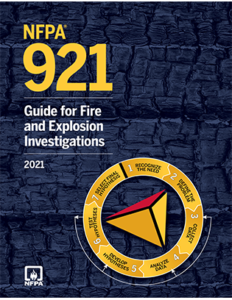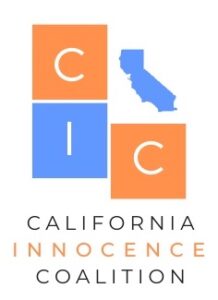 The California Innocence Coalition (CIC) co-sponsored and advocated for the passage of Senate Bill (SB) 467 to ensure anyone wrongfully convicted of a crime because of faulty forensics, scientific, or medical evidence may seek post-conviction relief. This bill took effect on January 1, 2023.
The California Innocence Coalition (CIC) co-sponsored and advocated for the passage of Senate Bill (SB) 467 to ensure anyone wrongfully convicted of a crime because of faulty forensics, scientific, or medical evidence may seek post-conviction relief. This bill took effect on January 1, 2023.
CIC’s mission is to protect the rights of the innocent by litigating their cases to bring them home and to promote a fair and effective criminal legal system by advocating for change in California laws and policy. Faulty forensic science is a leading contributing factor to wrongful convictions, occurring in 52% of DNA exoneration cases nationwide, 24% of all exonerations in the nation, and 16% of the California exoneration cases known since 1989. In wrongful conviction cases, experts offered testimony that was critical evidence leading to the conviction that was either flawed forensic science or scientific methods that are widely debated within the scientific community. Examples of this type of evidence include shaken baby syndrome/abusive head trauma, arson, microscopic hair comparison, latent fingerprints, ballistics, and bitemarks.
Below you will find resources related to litigating wrongful conviction cases based on faulty forensic science.
Strengthening Forensic Science in the United States: A Path Forward (NAS Report)
Published in 2009, the NAS Report examined recent advances in forensic sciences and scrutinized scientific work from within the relevant communities revealing evidence of faulty or unsubstantiated forensic science. This evidence and testimony may have contributed to wrongful convictions of innocent people. The NAS Report demonstrated the potential danger of giving undue weight to evidence and testimony derived from imperfect testing and analysis. This report makes 13 recommendations, including the creation of an independent, scientific oversight entity for forensic science, investing in research and standards setting, addressing cognitive bias in the practice of forensic testing and educating judges and legal practitioners.
Forensic Science in Criminal Courts: Ensuring Scientific Validity of Comparison Methods (Report to the President)
The President’s Council of Advisors on Science and Technology (PCAST) report, published in 2016, aims to help close gaps for the case of forensic “feature-comparison” methods—that is, methods that attempt to determine whether an evidentiary sample (e.g., from a crime scene) is or is not associated with a potential “source” sample (e.g., from a suspect), based on the presence of similar patterns, impressions, or other features in the sample and the source. Examples of such methods include the analysis of DNA, hair, latent fingerprints, firearms and spent ammunition, toolmarks and bitemarks, shoeprints and tire tracks, and handwriting. Like the NAS Report, the PCAST report was issued by scientists and people in the fields that were being scrutinized. The report also highlights the need for careful examination of other scientific and medical evidence such as arson and Shaken Baby Syndrome/Abusive Head Trauma.
National Academy of Sciences Report: A Challenge to the Courts
This opinion piece was authored by Judge Nancy Gertner (ret.) in response to the issuance of the NAS report and its impact on criminal cases. The piece was published in Criminal Justice, Volume 27, Number 1, Spring 2012. Nancy Gertner is a senior lecturer on law at Harvard Law School and served as judge for the US District Court of Massachusetts from 1994 to 2011.
The Role of the Triad in Medical Investigations of Suspected Traumatic Shaking: A Systematic Review
In cases of suspected traumatic shaking, the diagnosis has conventionally been based on three findings, referred to collectively as the triad, namely: subdural hematoma (bleeding between the dura mater and the brain), retinal hemorrhages, and various forms of brain symptoms (encephalopathy). The presenting history is often that of lethargy, seizures and apnea. The purpose of this evaluation was to determine how reliably the triad or its components can be explained by traumatic shaking of children up to one year of age.
Guide for Fire and Explosion Investigations
The National Fire Protection Association (NFPA) 921 sets the bar for scientific-based investigation and analysis of fire and explosion incidents. Referenced in the field, in training, and in court, it is the foremost guide for rendering accurate opinions as to incident origin, cause, responsibility, and prevention. It is intended for use by both public sector employees who are responsible for fire investigation and private sector professionals who conduct investigations for insurance companies or litigation purposes.
Additional Resources and Articles
National Institute of Justice, “The Slow but Steady March Towards a More Reliable Forensic Science”
Chris M. Fabricant, “Junk Science and the American Criminal Justice System”
Randy Papetti and Christopher M. Milroy, “The Forensic Unreliability of the Shaken Baby Syndrome”

